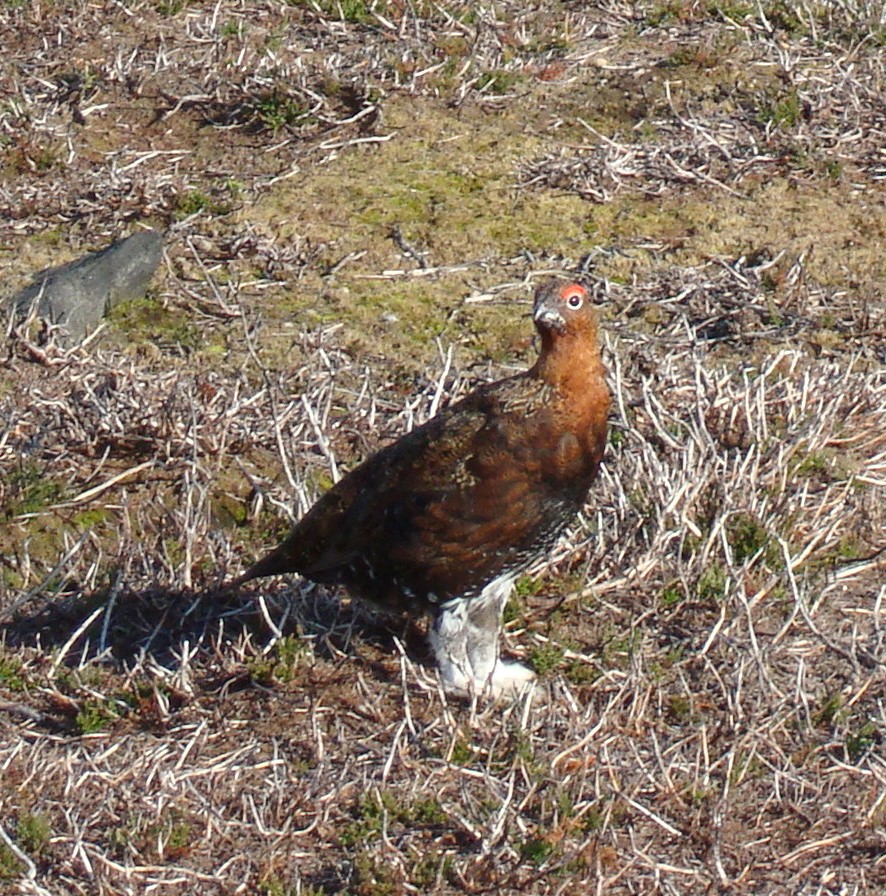
A red grouse
|
On the moor, the three saboteurs waited for the shooters to arrive. The August sun shone on purple heather, tussocks of boggy grass, and a few bilberry bushes that had survived the depredations of sheep and fire. Stella picked some tiny bilberries and poured a handful into her mouth, savouring the sweet, concentrated taste. They took the edge off her thirst. She was hot already, and it was only eight o'clock in the morning. Her neoprene suit felt stifling, which at least reassured her that its customised layers should repel any tasers or tranquilliser darts. |
This story is about the British sport of shooting grouse. The grouse is a bird that's prized because its fast flight makes it particularly difficult to shoot.

A red grouse
The sport goes back centuries to the pre-Victorian era. Grouse are reared on large estates specifically managed for them: they eat heather, and so the estates comprise vast tracts of heather. Other wildlife on these estates is strictly controlled by trapping and poisoning, in order to reduce competition for the grouse.
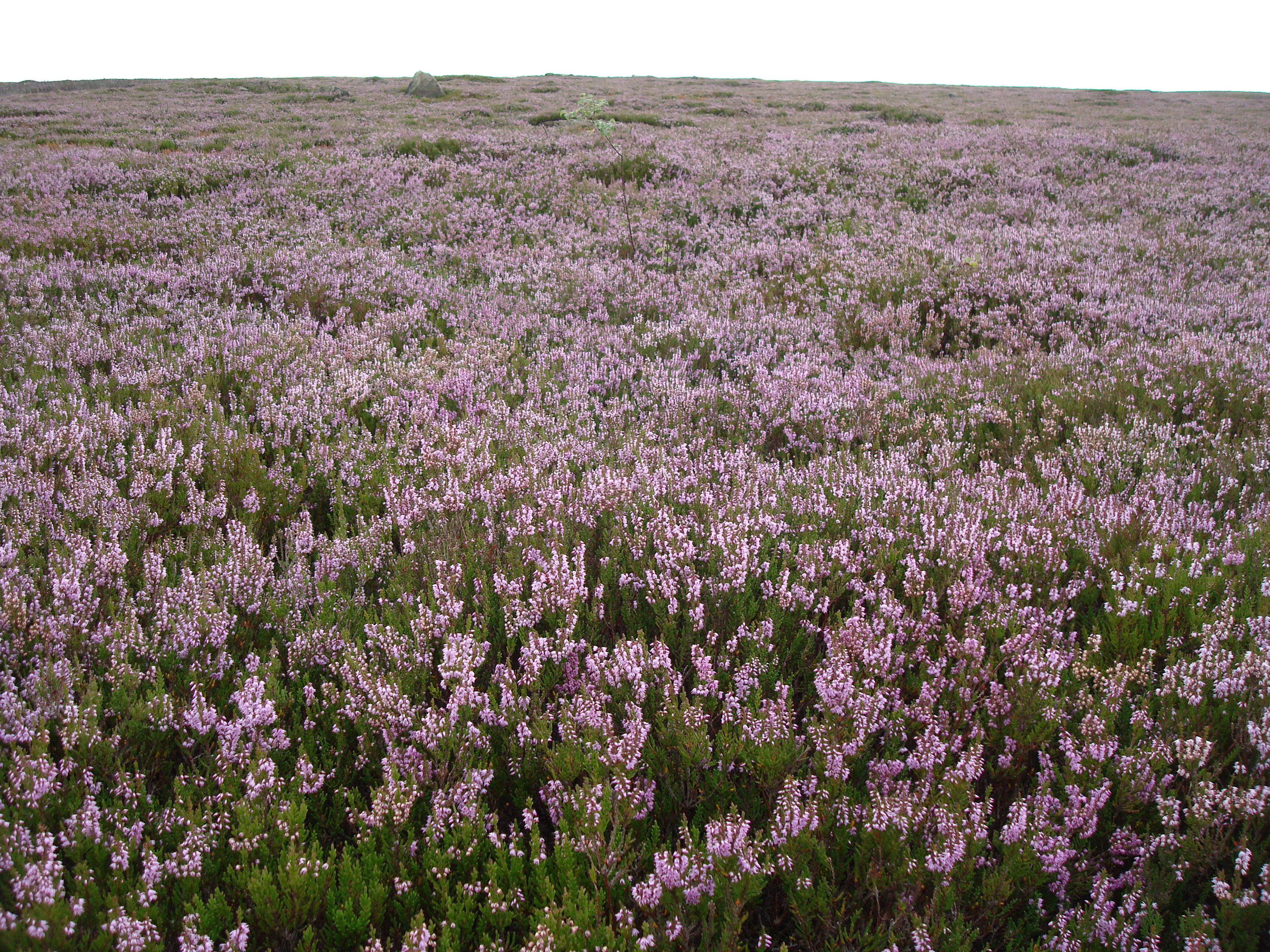
Heather moorland
The need for large estates, and expensive shotguns, meant that shooting was historically a sport of the upper classes. The record for bagging grouse belongs to Lord Walsingham, who one day in August 1888 personally shot more than a thousand birds. That was on Blubberhouses Moor, Yorkshire, which is less than twenty miles from my house.
Grouse shooting continues as a sport to this day. It's still an upper-class hobby, but it's now more accessible to a wider range of people. As an ancient sport with aristocratic associations, it's popular with the kind of people who like the idea of participating in the traditional sport of the gentry. (And, of course, it's popular with people who like guns, but in Britain there is much less of a gun culture than there is in America.)
There are two main ways that grouse can be shot. In "driven" grouse shooting, the shooters (known as "Guns") stand and wait behind hides (known as "grouse butts", often a set of small stone walls covered in turf) while the estate workers drive the birds toward the Guns. In "walk up" shooting, the Guns walk across the moor and use dogs to flush out the birds.
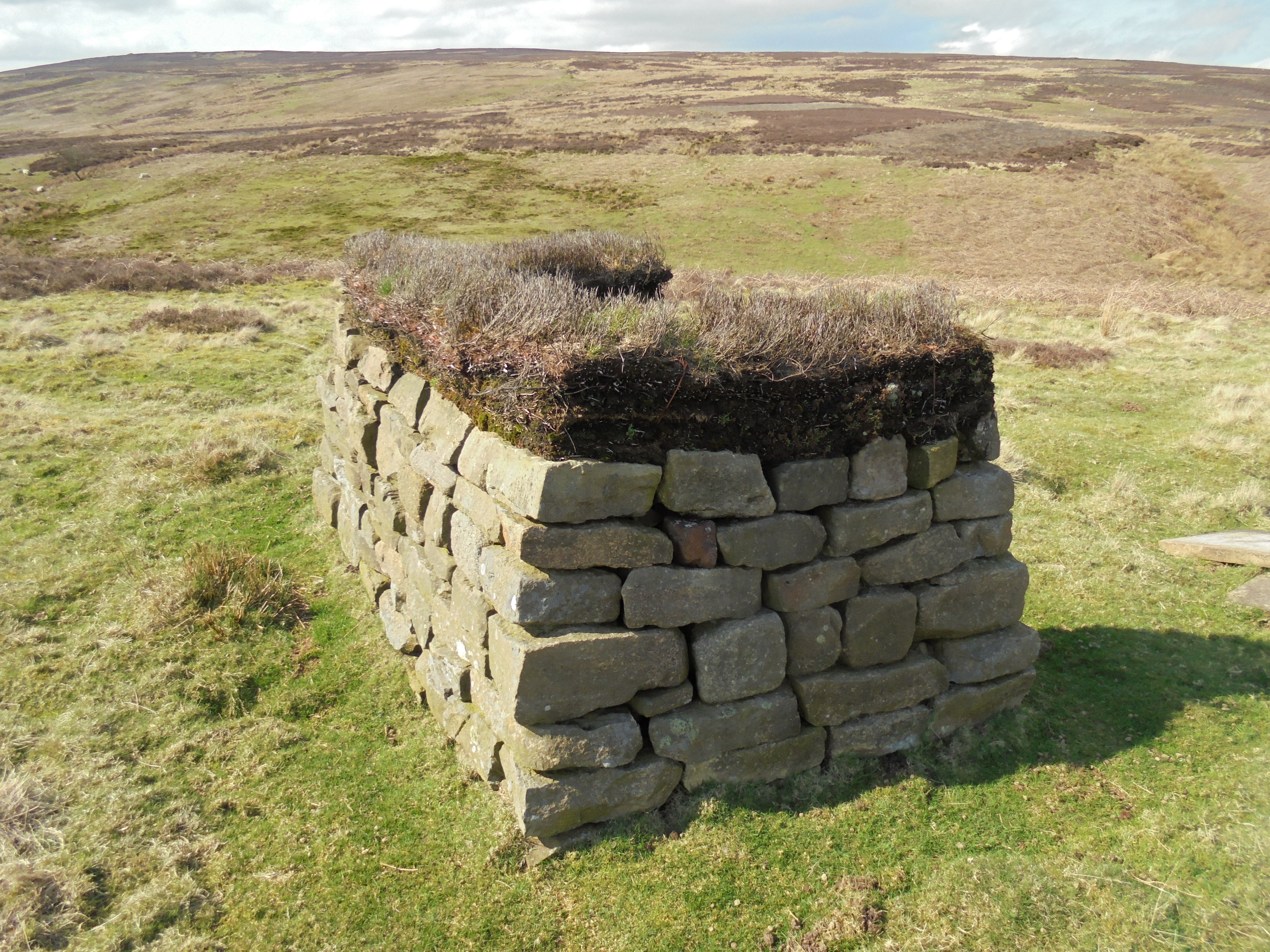
A grouse butt
Although the main point of grouse shooting is the skill and the challenge of it, the birds don't go to waste. The grouse are eaten. Because they live their entire lives in the open countryside, they can be considered the ultimate free-range food.
The idea for my story "Shooting Grouse" came to me one day while I was out hiking. I passed some grouse butts in the uplands, and I experienced a moment of realisation. I'd vaguely known this before, but it suddenly came home to me that the entire heather moorland existed solely for the purpose of allowing people to shoot birds. Very little of England's landscape is "natural". I was walking through a vast shooting gallery.
Like many ancient traditions that once went unquestioned, grouse shooting is now rather controversial. And controversy — conflict — always has the potential to make a story. So I wrote one! The story's title has a double meaning, because "grouse" also means a complaint, so "Shooting Grouse" refers both to the sport itself, and also to opponents' complaints about shooting.
Its supporters say:
Opponents of grouse shooting say:
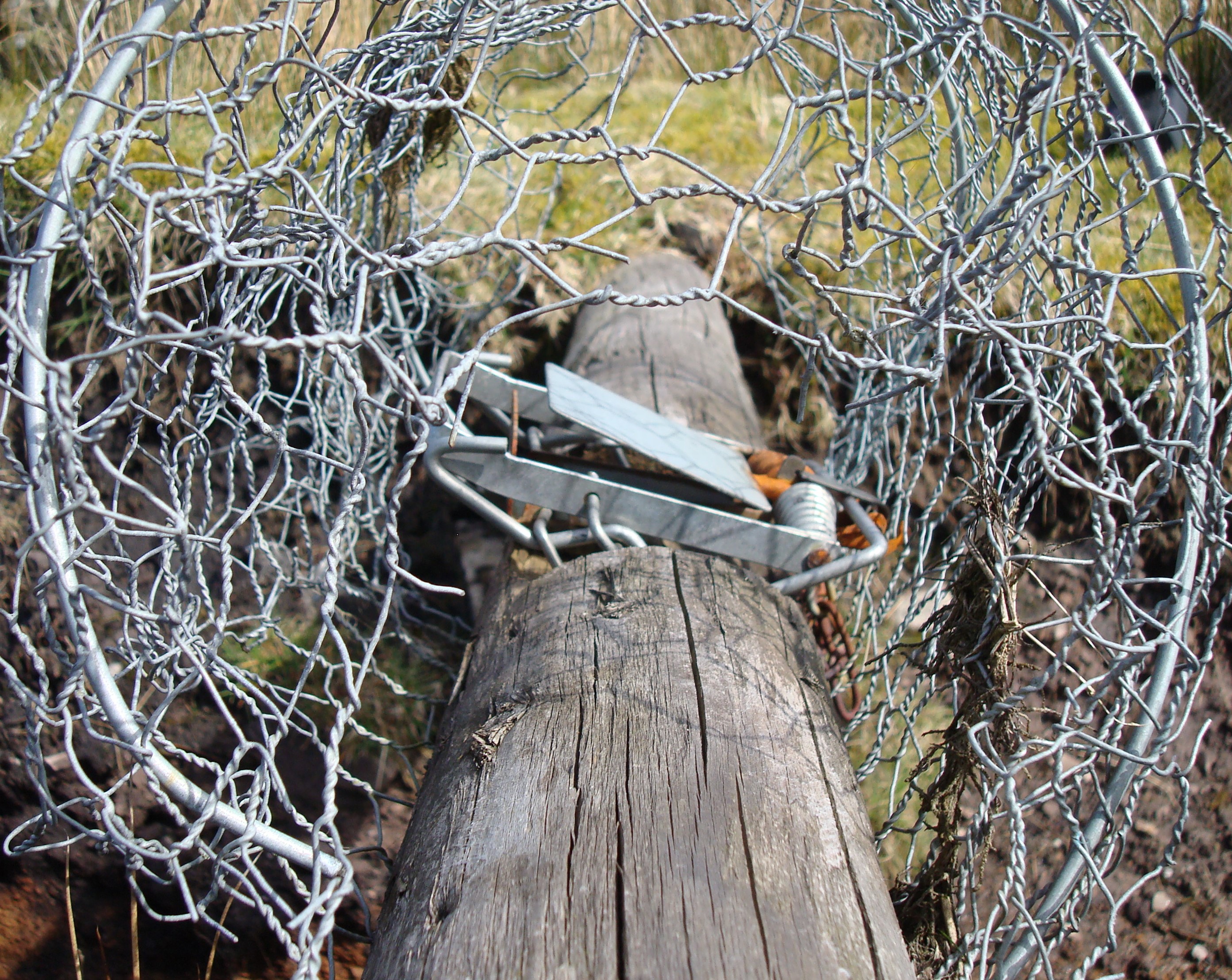
A trap
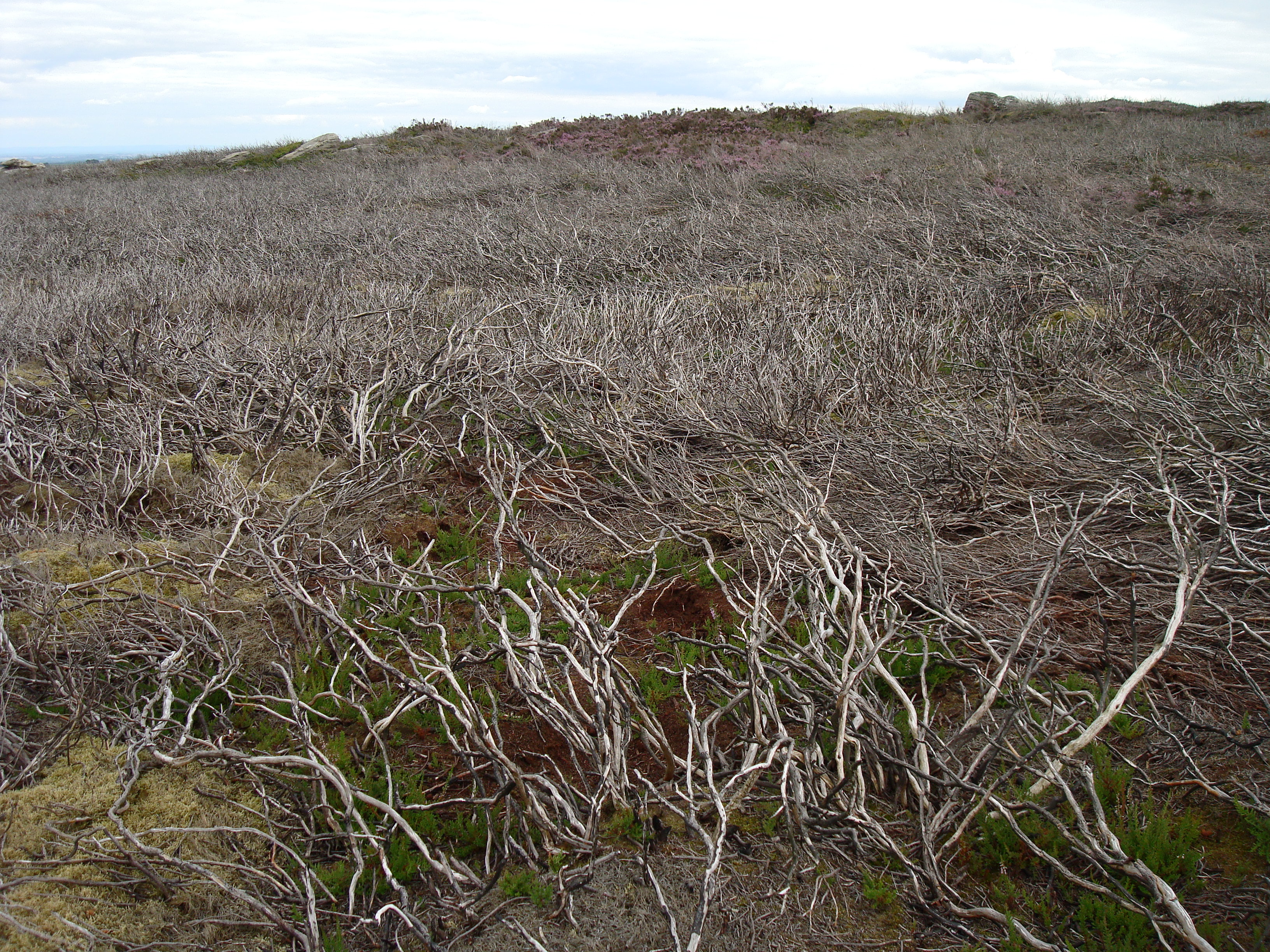
Burnt heather
My instinctive sympathy lies with the opponents of grouse shooting. However, I recognise that a case can be made either way; indeed, this is what makes it a good subject for a story. I used an anti-shooting activist as the protagonist, but undercut this by gently satirising the saboteurs' view of themselves as costumed superheroes. I also made sure that the shooters had their case represented. It's fine to be a writer with opinions, but you have to be intellectually honest about each side's case, or you just end up writing hack propaganda.